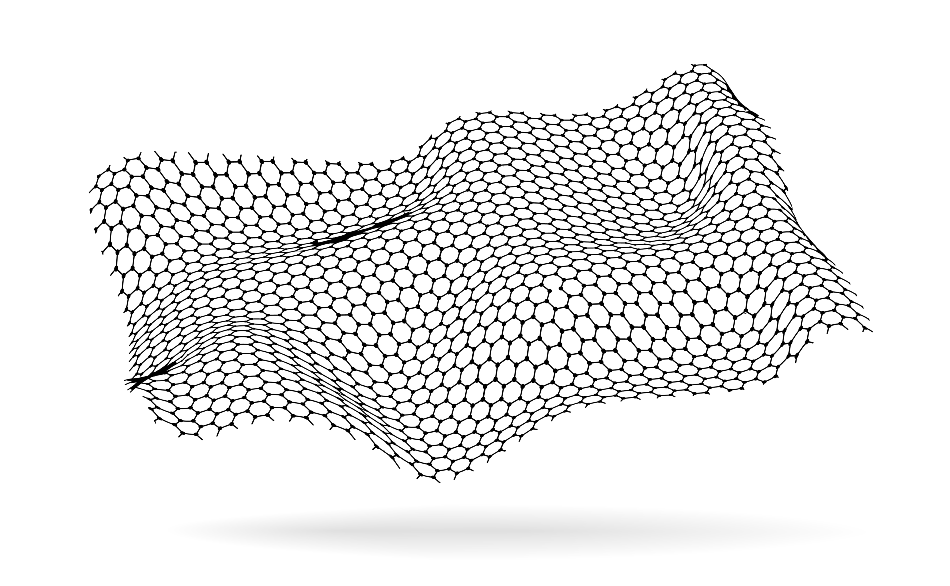Nano-imaging is crucial in the emerging sectors of nanotechnology and nanomaterials. Numerous high-resolution imaging techniques have been developed, enabling industrial applications of materials such as graphene thin-films and carbon nanotubes. The key to many of the techniques for nano-imaging is the mathematical theory and application of discrete tomography.

Image Credit: My Portfolio/Shutterstock.com
What is Tomography?
Tomography is a technique for scientific imaging that combines slices or sections of the subject matter detected by a wave. The term comes from the Ancient Greek words for “slice” (τόμος; tomos) and “to write” (γράφω; graphō).
When a wave such as an X-ray or magnetic resonance passes through the specimen material or object, it detects two-dimensional measurements at intervals along the third dimension. The data in these measurements is then subjected to a mathematical procedure known as tomographic reconstruction to produce a final image with information on all three dimensions of the subject. There are numerous algorithms in use for tomographic reconstruction.
Examples of tomography applications include magnetic resonance imaging (MRI), ultrasound, and X-ray imaging. It was first developed by radiographer Alessandro Vallebona in the 1930s and was considerably advanced with the introduction of computer processing to tomographic reconstruction in the 1970s.
What is Discrete Tomography?
In 1994, at Rutgers University in New Jersey, USA, American mathematician Larry Shepp organized the first meeting focussed on discrete tomography and coined the phrase in doing so. The Mini-Symposium on Discrete Tomography held at Rutgers’s Center for Discrete Mathematics and Theoretical Computer Science (DIMACS) on September 19, 1994, allowed for this new approach.
Discrete tomography is closely related to discrete mathematics, where discrete rather than continuous mathematical structures are studied. Numbers in the real world are continuous, with a smooth transition from 7 through 7.1, 7.2 and so on to 8. Integers, graphs, and statements in logic, however, are discrete. Number theory, complexity theory, and especially combinatorics were also important for the development of discrete tomography.
Due to its focus on discrete integers rather than continuous numbers, discrete tomography is uniquely capable of creating binary images from scanned information. Numerous reconstruction algorithms can be used with discrete tomography, but algebraic reconstruction techniques (ARTs) have been particularly favored. The discrete algebraic reconstruction technique (DART) proposed by Kees Joost Batenburg and Jan Sijbers in the 2000s (Batenburg and Sijbers, 2011) was a recent advance.
Discrete Tomography used to Image Nanomaterials
DART has been used to successfully create three-dimensional (3D) images of various nanomaterials (Batenberg, Kaiser and Kübel, 2006). Researchers used the DART reconstruction algorithm to create 3D images of a single gold nanoparticle, a carbon nanotube grown out of a catalyst particle, and embedded crystals of erbium and silicon composite (ErSi2). The algorithm was used on experimental electron tomography datasets of those materials and produced satisfactory results.
Recently, researchers found that the catalyst particles used to grow carbon nanotubes –interesting nanotechnology potentially having applications as diverse as thin-film transistors for computer processing, nanosprings, and alloy strengtheners – have tiny cavities inside of them (Bals et al., 2007). This discovery – and the related observation that most particles in the 3D nanostructure had been oxidized – was made only with the aid of discrete tomography.
Sources
Bals, S., Batenburg, K.J., Verbeeck, J., Sijbers, J., and Van Tendeloo, G. (2007). Quantitative Three-Dimensional Reconstruction of Catalyst Particles for Bamboo-like Carbon Nanotubes. Nano Letters, 7(12), pp.3669–3674.
Batenburg, K., Kaiser, U. and Kübel, C. (2006). 3D Imaging of Nanomaterials by Discrete Tomography. Microscopy and Microanalysis, 12(S02), pp.1568–1569.
Batenburg, K.J., and Sijbers, J. (2011). DART: A Practical Reconstruction Algorithm for Discrete Tomography. IEEE Transactions on Image Processing, 20(9), pp.2542–2553.
Disclaimer: The views expressed here are those of the author expressed in their private capacity and do not necessarily represent the views of AZoM.com Limited T/A AZoNetwork the owner and operator of this website. This disclaimer forms part of the Terms and conditions of use of this website.